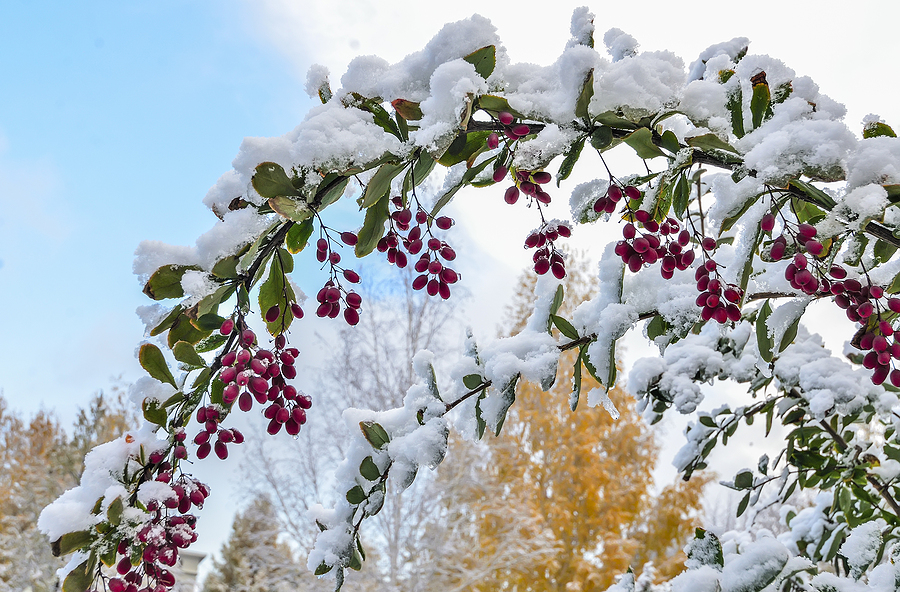
Just because it is winter, doesn’t mean Mother Nature is entirely asleep. Although your landscape plants are dormant this time of year, there are tasks you can do now that will give you a healthier and more beautiful landscape next spring.
Winter clean ups help prevent pest issues over the winter months and get you a head start on spring gardening!
Leaf clean-up
If you haven’t done so already now is the time to gather and pick up fallen leaves from your deciduous plants and trees. While you can utilize leaves as a way to mulch there are a few tips to make sure you don’t lead to pathogens or weeds later.
If your plants showed any signs of disease, do not use those leaves, this is especially important in ornamental cherry trees, rose bushes, and fruit trees. All clippings need to be disposed of away from your landscape. You should also be careful to make sure there are no seed heads in your leaf piles that may try to germinate in your leaves over the winter.
Mulching for an easier spring
Do not mulch over the crowns of your plants or change the depth at the base of your landscape trees. This can inhibit the air circulation and lead to fungal issues with your plants next spring. With mulching, there can be too much of a good thing, so make sure you don’t overwhelm your plants with mulch, create a consistent application and avoid overdoing it on slopes. You don’t want rain to wash away your product!
When properly applied, mulch will help your soil retain water next spring and prevent winter weeds. Be sure to mulch the non-planted areas about three inches deep with compost, mulch, or bark for the best visual impact and practical success. There are winter and early spring weeds, so mulch will help prevent those before they can take hold in your soil.
Cutting back perennial plants
Many perennials “die-back” to the ground and return effortlessly the following spring. By this time of year you will be able to identify what plants remain woody and above ground and what have retreated back to below ground level. If your perennial truly is herbaceous (no woody above ground structure) you are free to remove the last season’s foliage. Hostas, coneflowers, and other flowering perennial plants are ready to be “put to bed” now.
There are a few perennial plants that can play tricks on you, like potentilla, lavender, and rosemary. These plants have a woody structure and are technically small woody shrubs often grouped with perennials because of their size. These perform best to shearing no more than a third of the whole plant, rather than a tough cut back. If you go too deep they will not grow back vigorously like other perennial plants. If they do get very woody and you can’t maintain their shape, it may be wise to replace them with younger plants.
Spent blooms
There are many reasons to hire a professional landscaper and flowering plants is one of them. Often folks who struggle with “Why won’t my plant bloom,” have mistakenly pruned off the flower buds in the winter.
It is safe to cut off the blooms of hydrangeas and roses in the winter. Do not prune your rhododendrons, azaleas, or lilacs right now, because you may be removing their spring buds inadvertently in the process. If in doubt, consider the bloom time. It’s best to be cautious not to over prune your spring blooming plants if you can’t accurately identify them.
Contact us today for help getting your garden and property prepared this winter for a lovely spring.

